
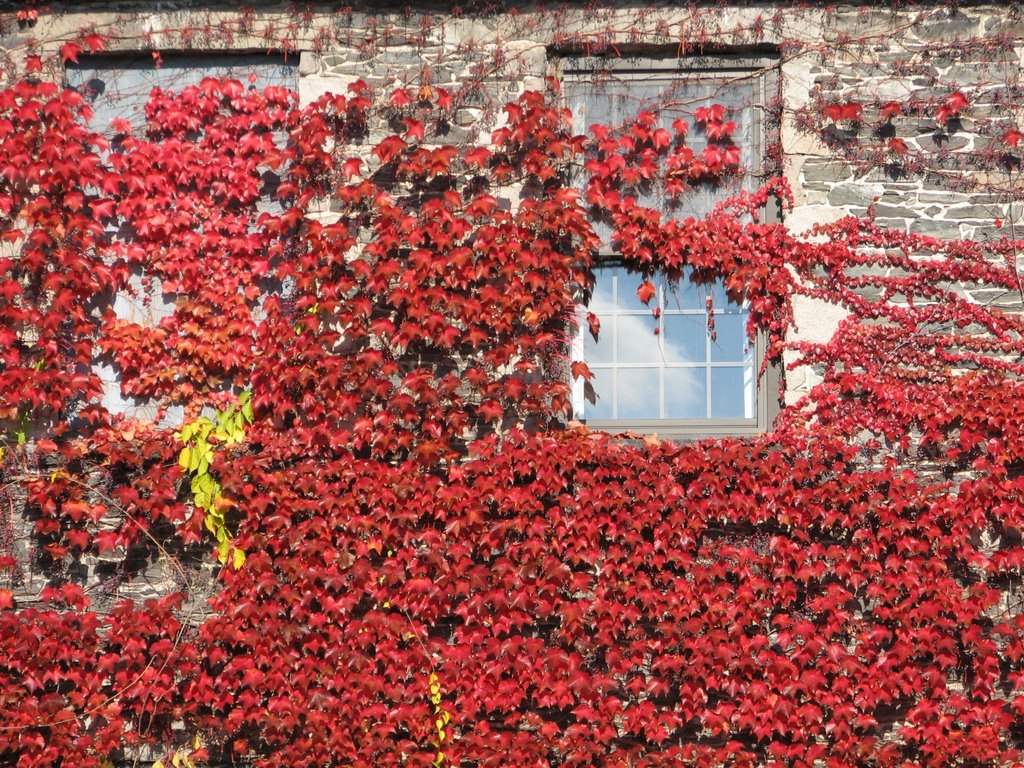
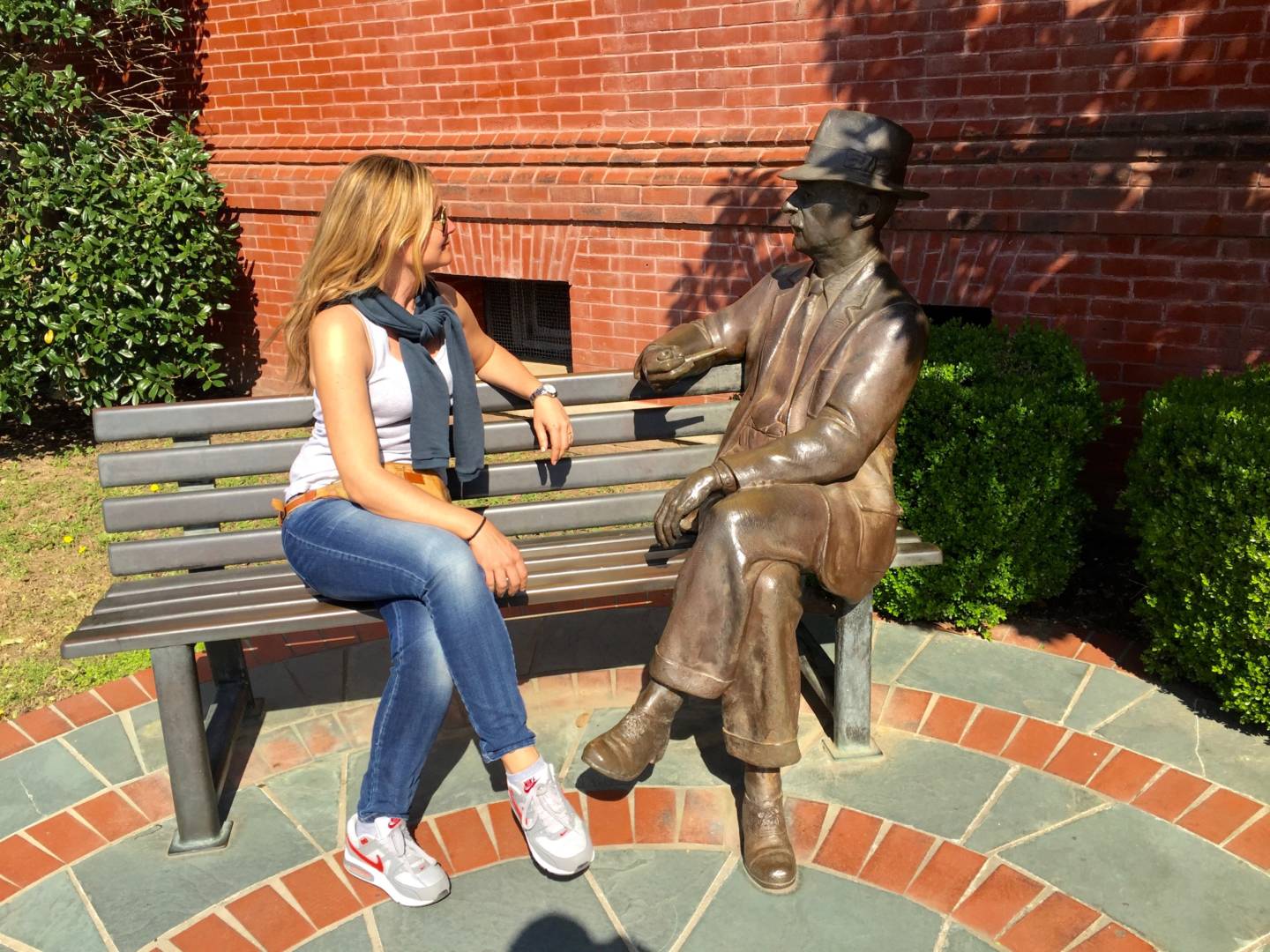
In Italian
The route skirting the Mississippi River from Vicksburg as far as Natchez is certainly – among the multiples itineraries in Mississippi to suggest – one of the most suggestive and charming ones.
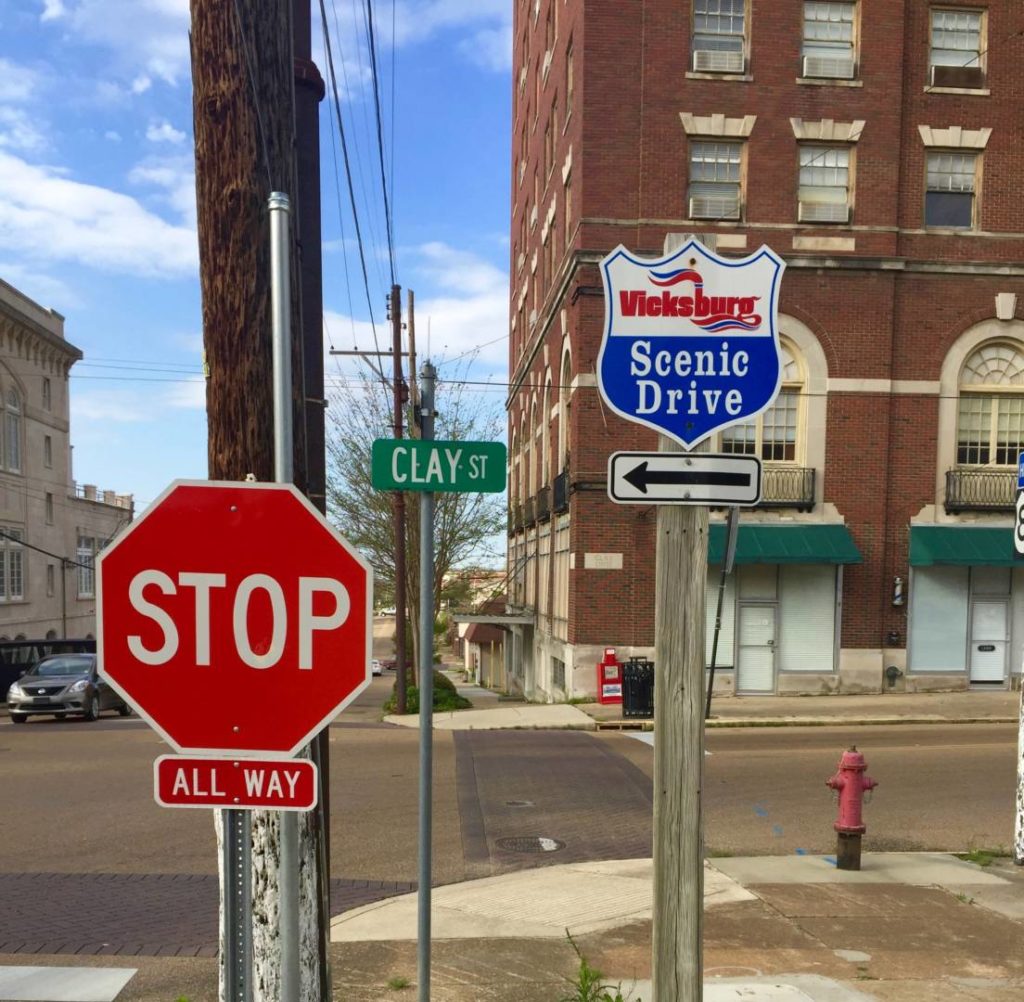
Itineraries in Mississippi, towards Vicksburg
200 km of history, ancient plantations, antebellum dwellings literally consumed by time, old highways intersecting, paths and wonderful naturalistic reserves related to the Native Indians and famous battlefield of the American Civil War.
An emotional itinerary which calls for three days in all and that can be easily included into a road trip along the Great River Road or the Natchez Trace Parkway coming from Tennessee or along the Blues Hwy 61 directly from the Mississippi Delta or – why not? – as extension from New Orleans in about 300 km.
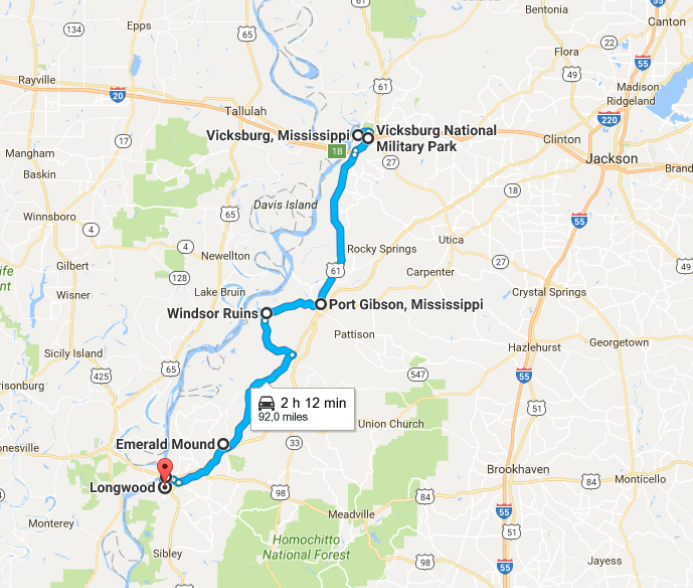
Itineraries in Mississippi: from Vicksburg to Natchez
Vicksburg is a charming small town of other times reclined on a hill slopping down softly as far as the levees of the Yahoo River, where the river flows into a bend of the bigger Mississippi River.
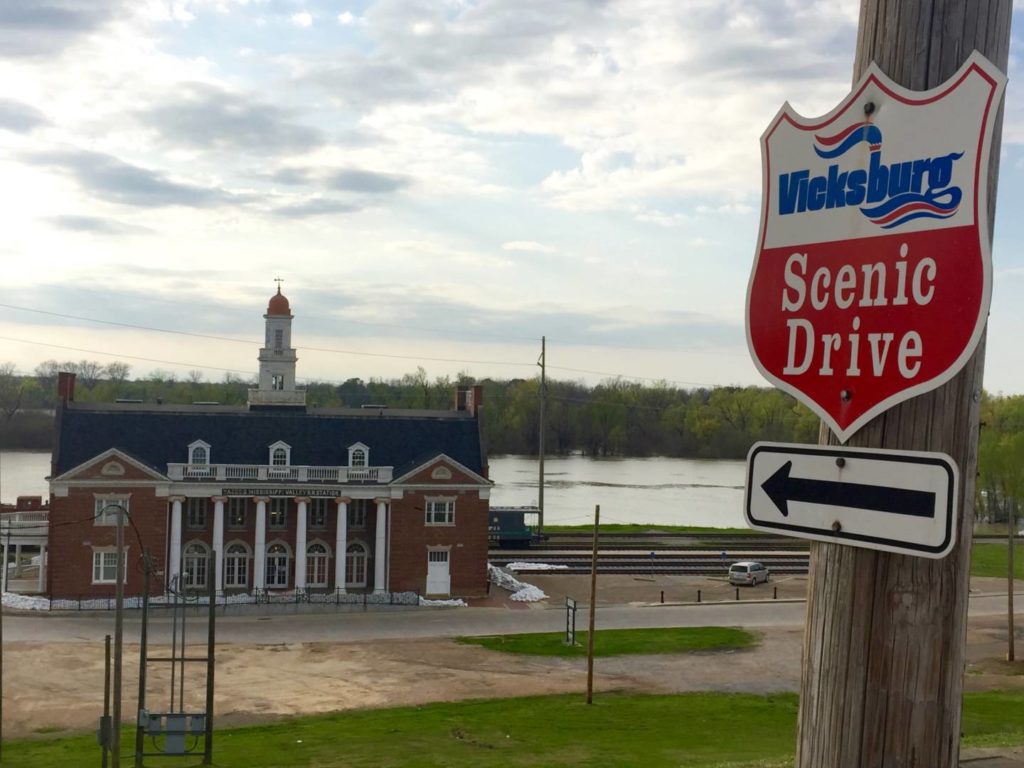
Itineraries in Mississippi, Vicksburg
It was founded in the remote 1811 and right for its important strategic position – a promontory at the flow of the two rivers, precious way of communication towards the secessionist South – it became the protagonist of one of the most fierce and emblematic battles of the American Civil War, today remembered in the boundless battlefield of the National Military Park.
The town is perfectly preserved.
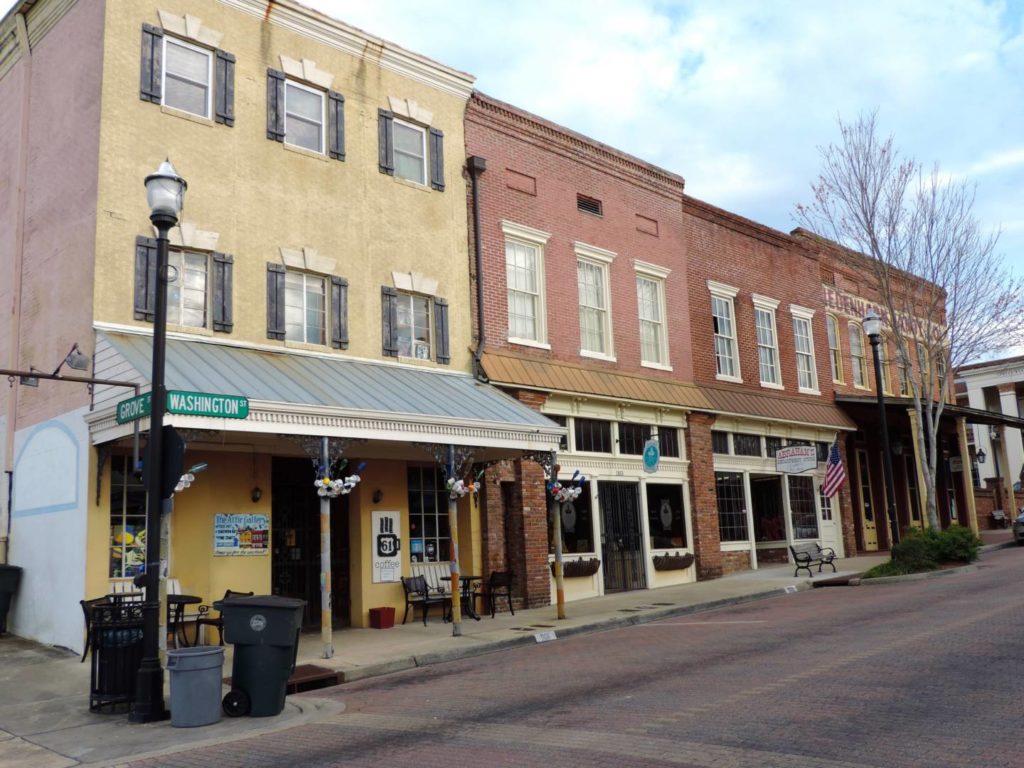
Itineraries in Mississippi: the old downtown of Vicksburg
The core of its old downtown from the Old Courthouse hill as far as the cobbled paving streets of the Washington St. is studded with ancient antebellum dwellings, most of which survived the Civil War.
Like for example the Balfour House where one of the most famous “diarist” of the conflict, Emma Balfour, lived into. And the Willis Cowan House, the seat of the Confederate Army Headquarters that right here signed the surrender on July 3rd 1863.
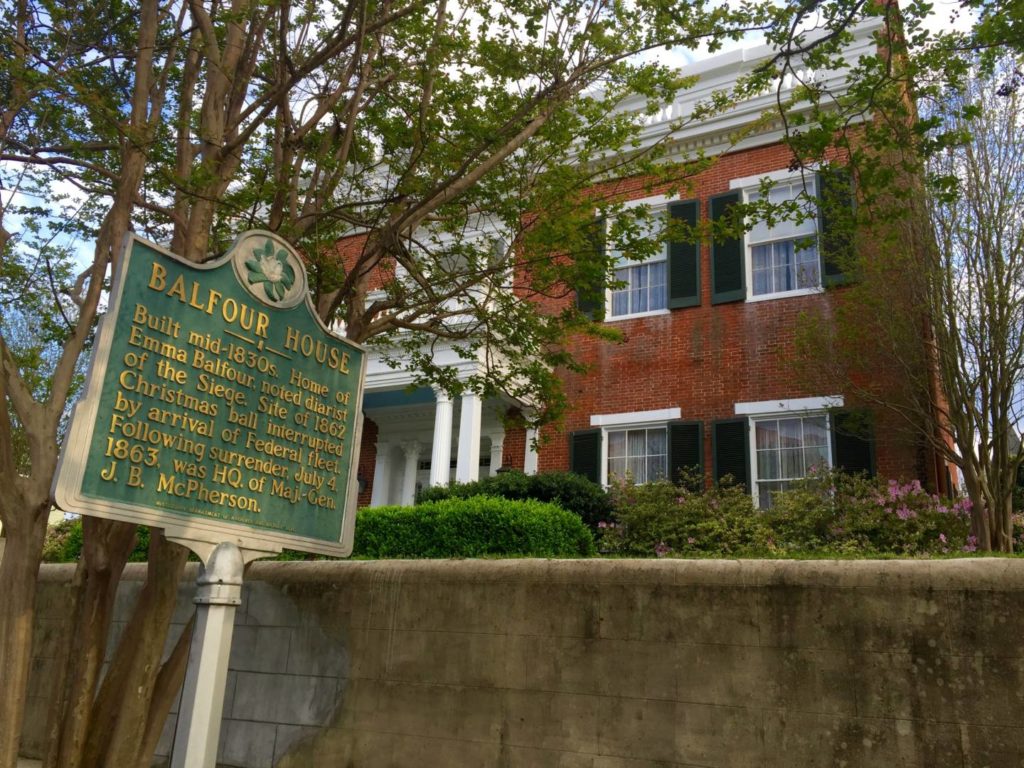
Itineraries in Mississippi, Balfour House
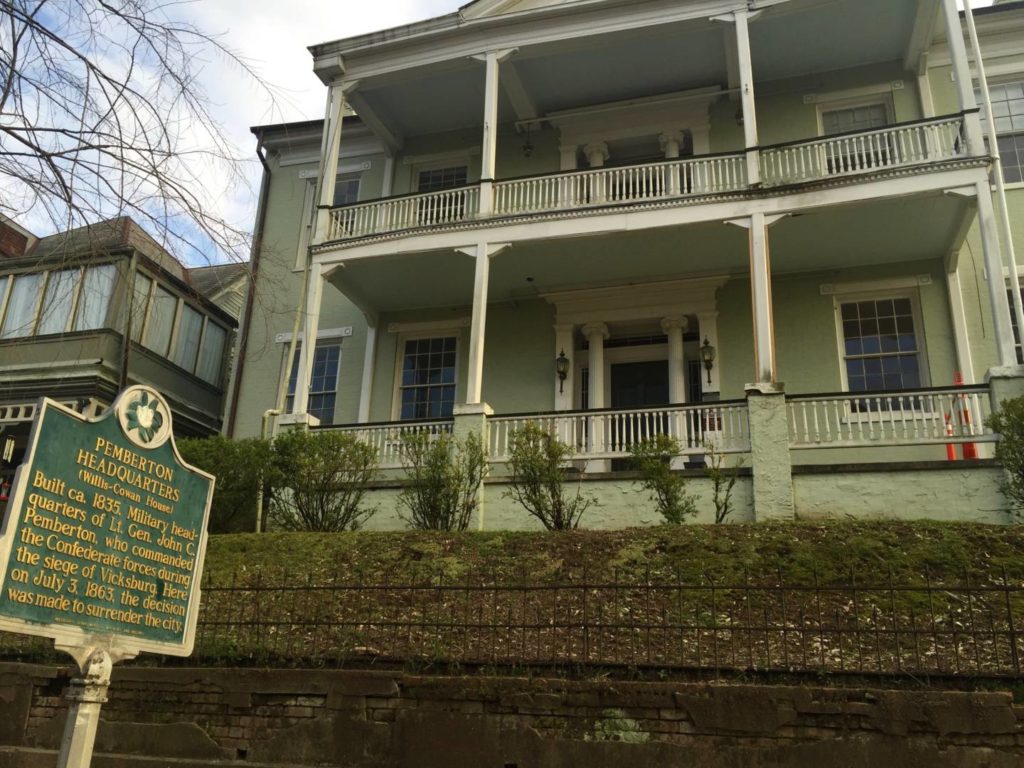
Itineraries in Mississippi: the Willis Cowan House
The area is rich in old mansions turned into B&B, in little curious museums – like the Biedenharn Coca-Cola Museum and the Lower Mississippi River Museum – and in an important number of gift and fancy goods stores, and antiques stores, often related right to the relics of the antebellum period or the same Civil War.
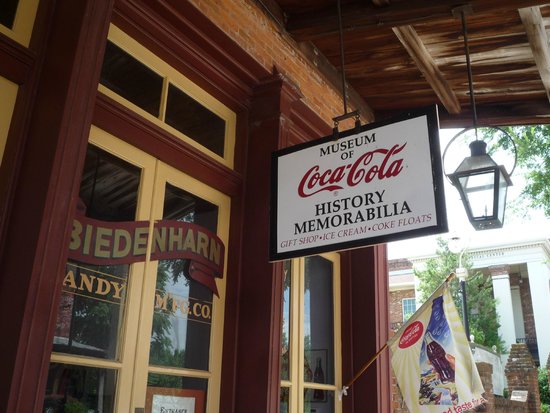
Itineraries in Mississippi: the Biedenharn Coca-Cola Museum Building
The promenade along the river allows to admire the very beautiful murals which show the town’s history and with a bit of chance to see the charming Queen of Mississippi berthing: it is the steamboat that allows to relive with a wonderful cruise on the old river of America the emotion of a thorough travel in time, from St. Paul in Minnesota as far as New Orleans in Louisiana.
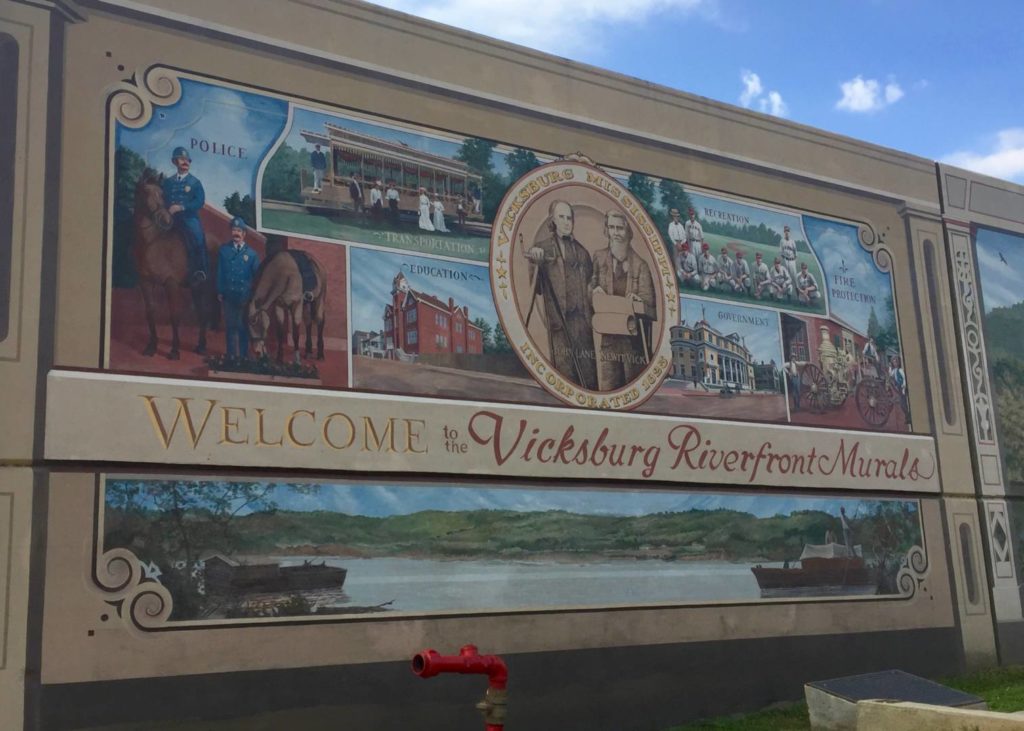
Vicksburg, murals
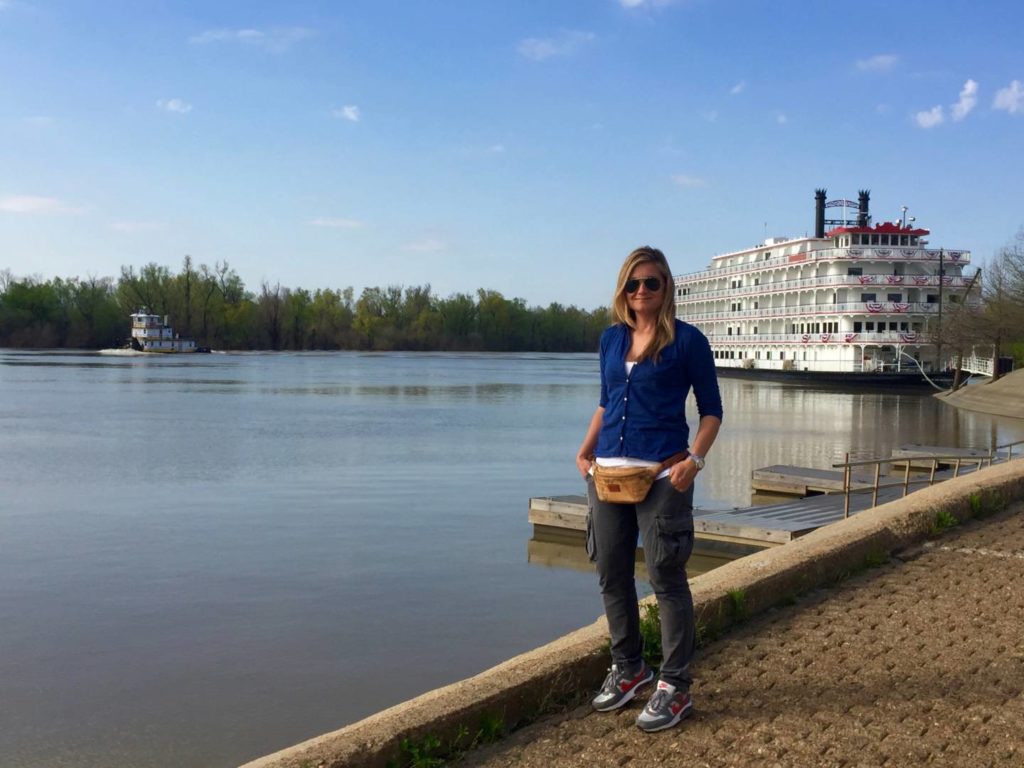
Itineraries in Mississippi: the arrival of the Queen of Mississippi in Vicksburg
The Vicksburg National Military Park is in the boundless park, once battlefield, neighboring the hill where Vicksburg rises.
It’s a National Park in all respects, created in 1899 to commemorate one of the most tragic sieges of the American Civil War.
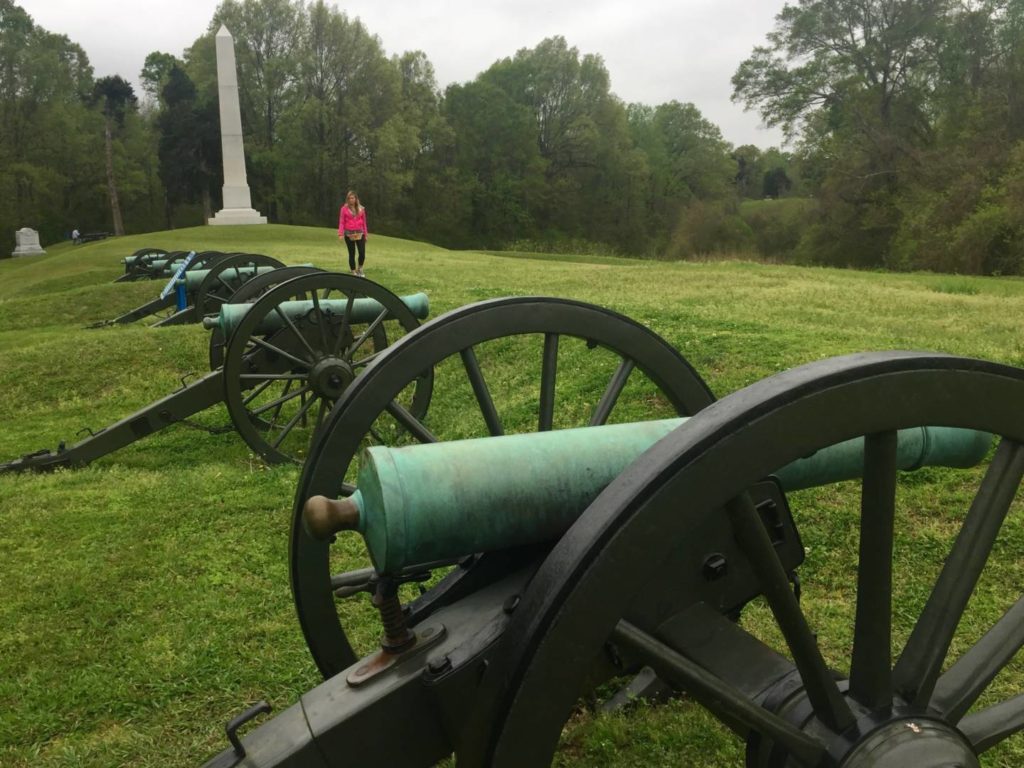
Itineraries in Mississippi: the Vicksburg National Military Park
The strategic position of the town allowed the Federals, the Union Soldiers, to aim at it besieging it for even 47 days, with a consequent and shocking number of victims, until the unavoidable and painful surrender of the Confederate, the Southerners, which took place in all respects on July 4th 1863.
A July 4th so difficult to forget that at least until 1960 the inhabitants of Vicksburg, fervent southerners – a thing that still today happens in many Southern small towns – refused to celebrate on July 4th meant as Independence Day, the American Independence from the British colonies.
The park is boundless.
To visit it completely calmly it would be necessary at least a whole day by car.
My tip is to start from the Visitor Center, with the opening filmed sequence telling shortly the events of the Vicksburg besiege and successively, with map and by car, have a tour of the Federal and Southerner posts, the several memorials and at last the National Cemetery (the graves of the Union Soldiers are separated from the Confederate ones).
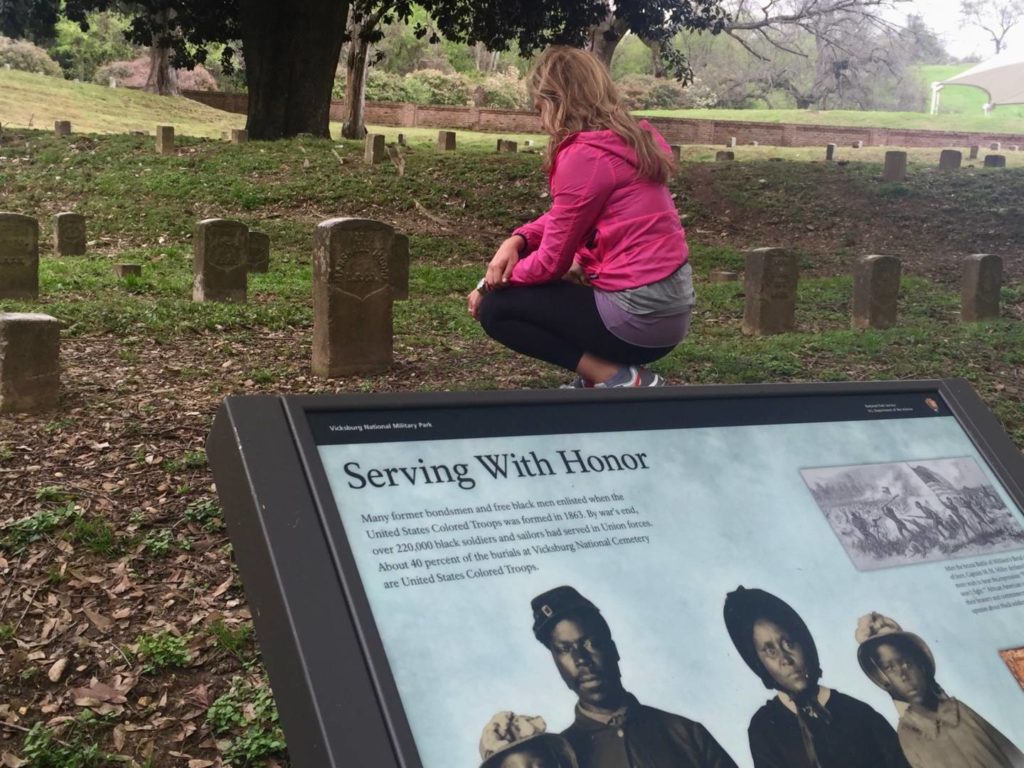
Vicksburg National Military Park, the Union graves
Don’t forget to stop and admire the USS Cairo, exhibited under a special cover inside the park. It’s the first gunboat battleship of the history, used right during the Civil War and recovered, surprisingly untouched, from the bottom of the Yazoo River.
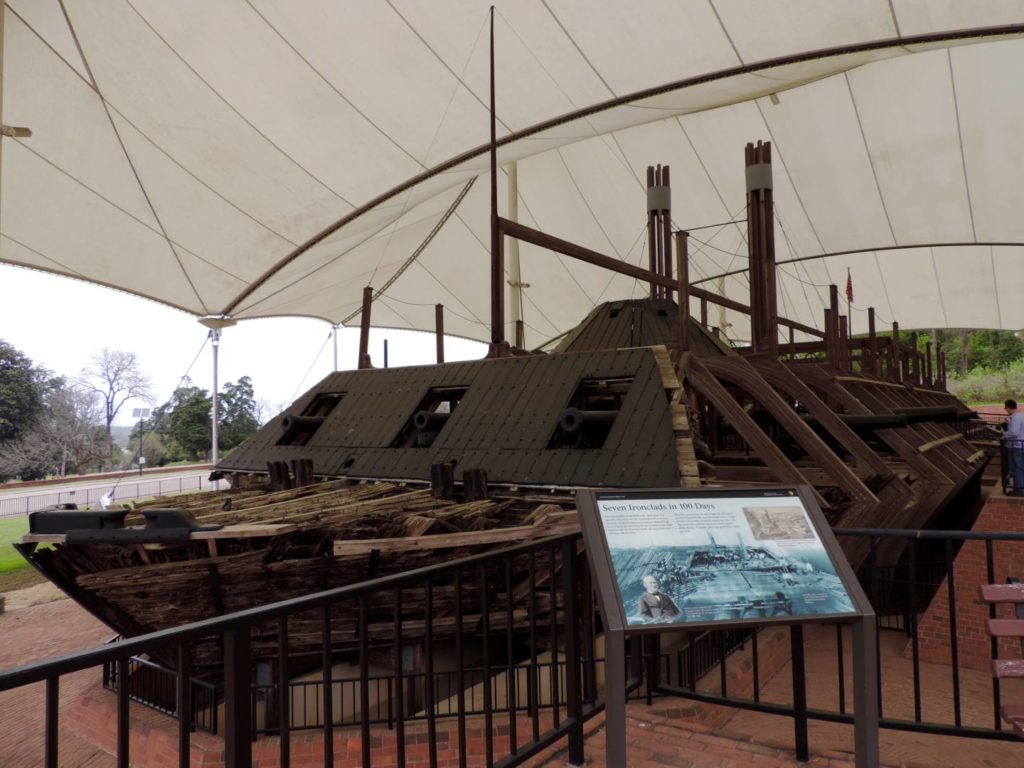
Vicksburg National Military Park, the USS Cairo
Going southwards, along the Blues Hwy 61, about 65 km far from Vicksburg you run into the little center of Port Gibson. Little over then a crossroads with some wonderful period houses: it is famous, too, for another tragic page of the American Civil War history, the Battle of Port Gibson.
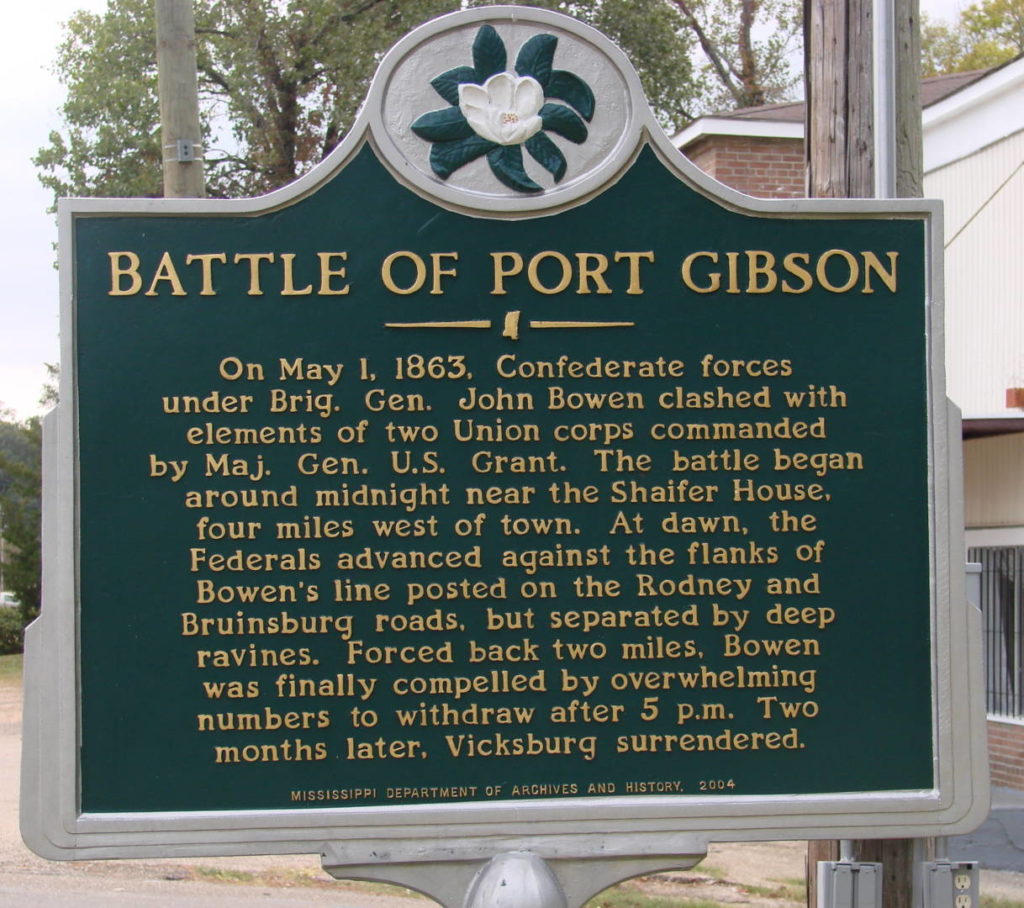
Itineraries in Mississippi, Port Gibson
Here the three most famous highways of the South cross: the Blues Hwy 61, the Natchez Trace Parkway and the Great River Road. Right taking the last one, once got past the Port Gibson crossroads and going towards the Mississippi River, after about 16km you’ll come across – neighbored by a fairytale landscape, magic at times, I’d add – one of the most suggestive places in the whole area: the Windsor Ruins.
23 Corinthian order columns will appear from nothing, completely swallowed by the neighboring vegetation.
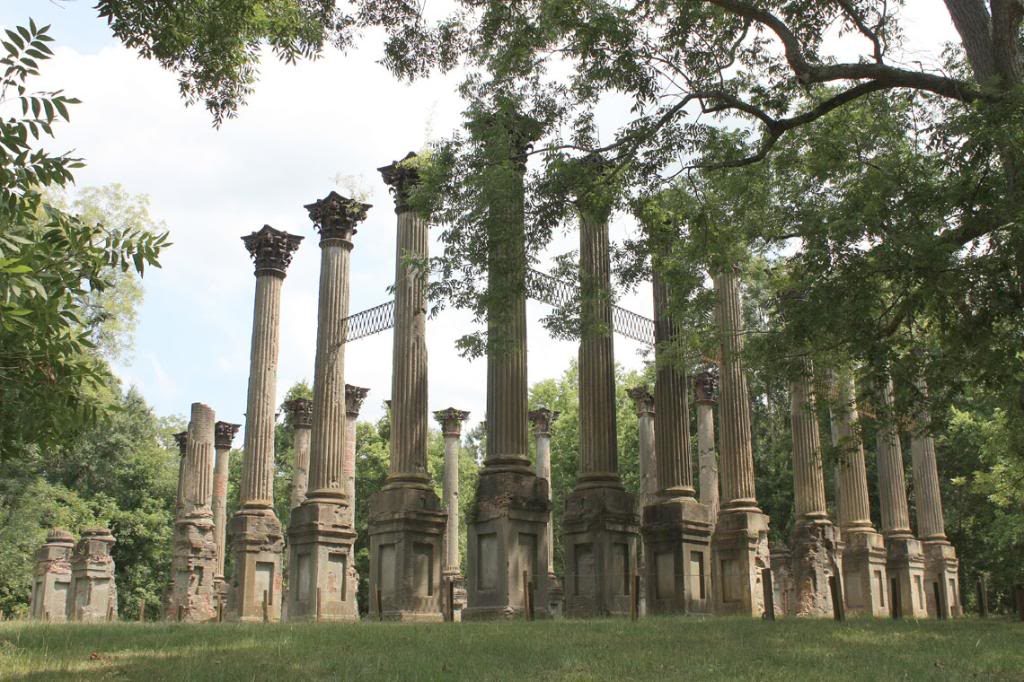
Itineraries in Mississippi, Windsor Ruins
It’s what remains about the manor of the Smith Daniell cotton plantation, dating back to 1861.
The columns were commissioned on purpose in St. Louis and moved along the Mississippi River as far as Port Gibson. Successively the house was occupied by the troops of General Grant during the Civil War: it survived the war but then it was destroyed by a fire in 1890. Little far it’s possible to visit also the little cemetery of The Daniells, hidden by the neighboring woods.
The area was the background of several TV series and TV shows and of the very beautiful “Ghost of Mississippi”, the 1996 movie dedicated to the murder of the Civil Rights leader in Mississippi, Medgar Evers.
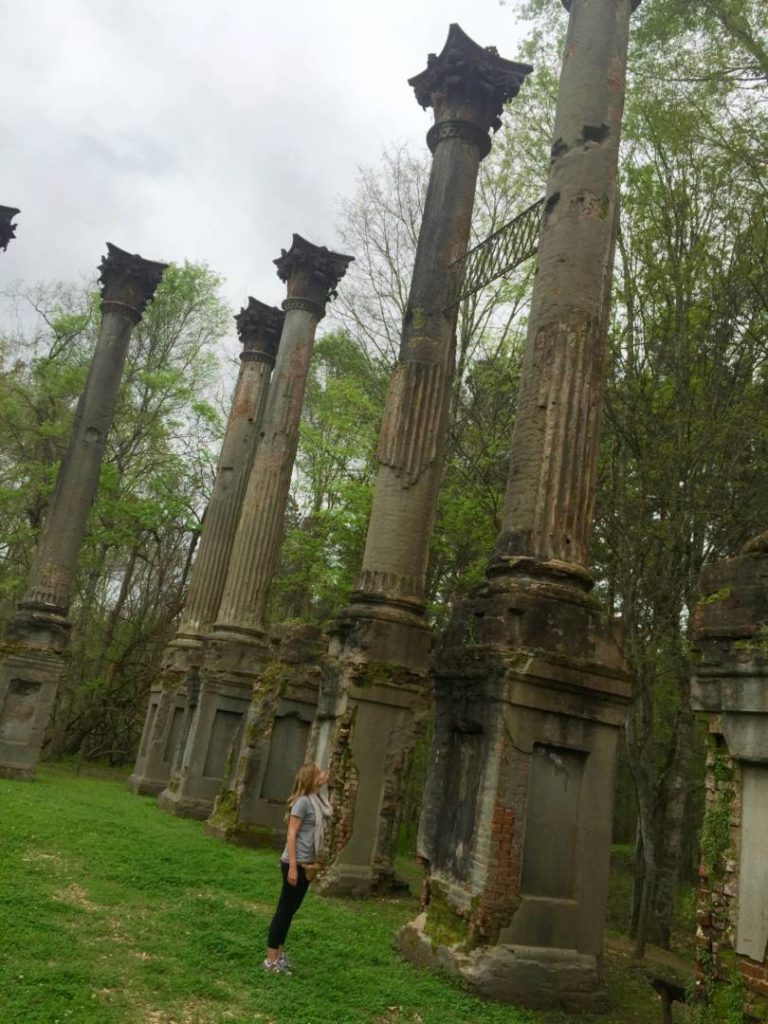
Itineraries in Mississippi, Windsor Ruins
Keep going southwards, coming back on the Natchez Trace Parkway, after about 50 km you run into Emerald Mound near Stanton – the entrance is indicated by the road signals.
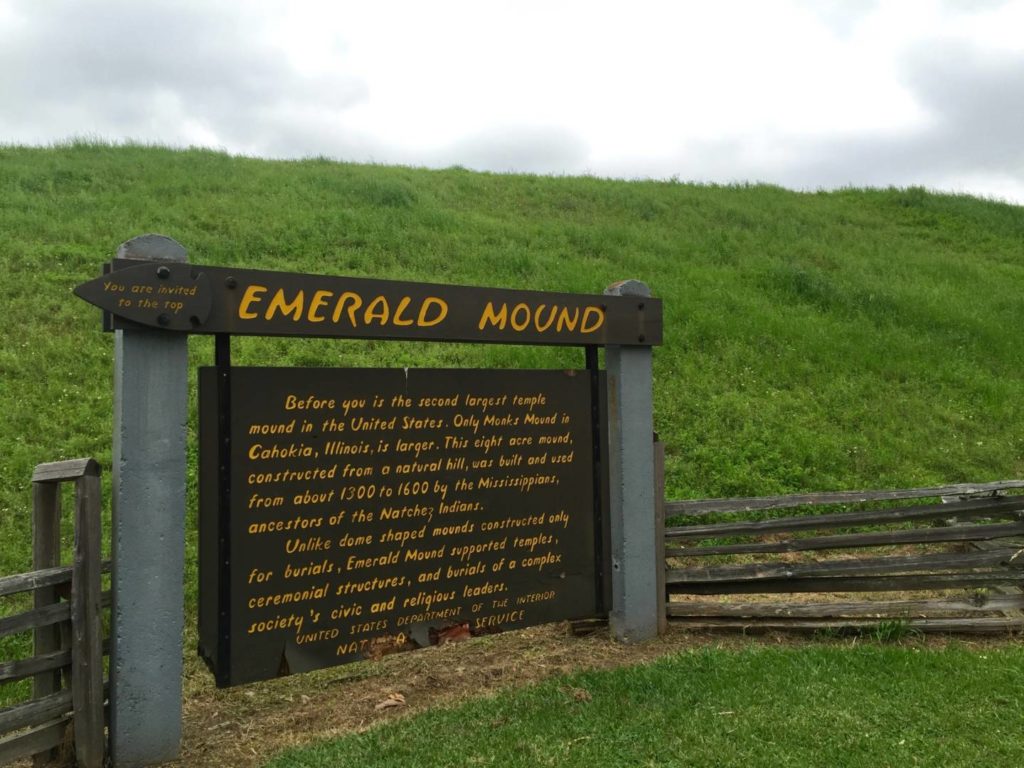
Itineraries in Mississippi, Emerald Mound
An ancient pre-Columbian mound, the second one in order of largeness and importance in the USA, related to the Plaquemine Native Indians culture, important ceremonial center dating back to 1200: it is formed by a big pyramid with a flat point and by other shorter two (actually it seems originally there were eight).
The access to the site is free: you can go up as far as the top of the main mound to admire the other buildings and the neighboring landscape.
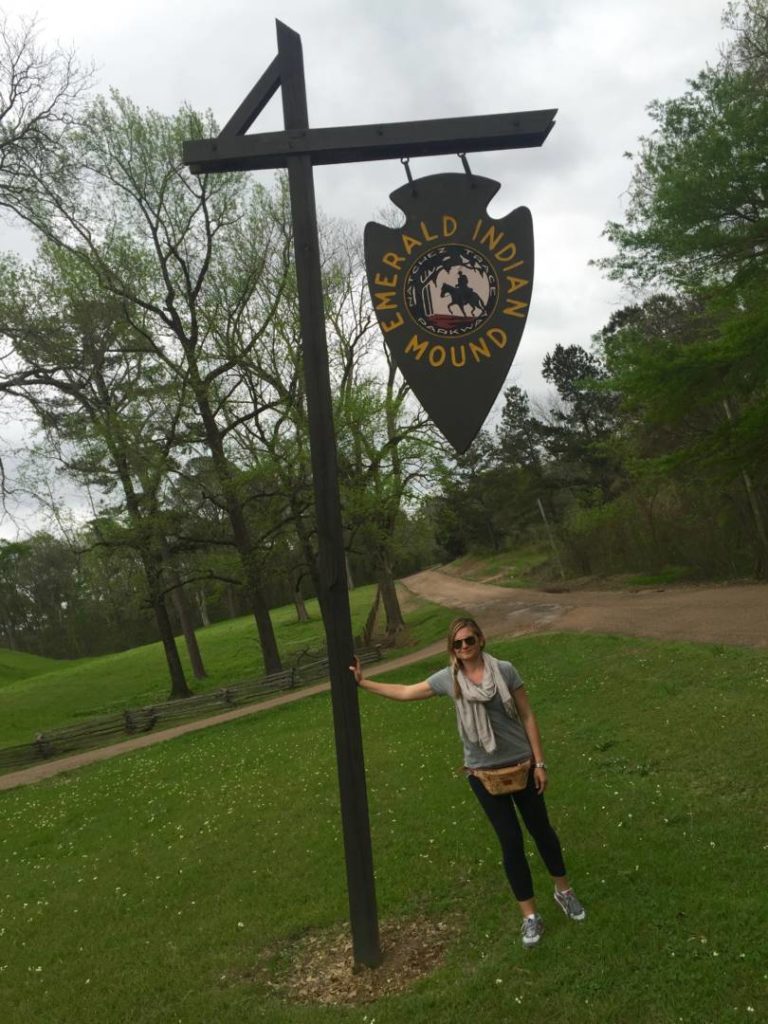
Itineraries in Mississippi, Emerald Mound
From Emerald Mound in 20 km you reach Natchez.
The most ancient town on the Mississippi River, founded in 1716 – this year it is celebrating its first 300 years – by French.
It’s a downright art gallery and/or historic museum in the open sky, it boasts one of the most ancient historic districts and the highest number of antebellum houses – even 668 perfectly preserved – in the whole nation.
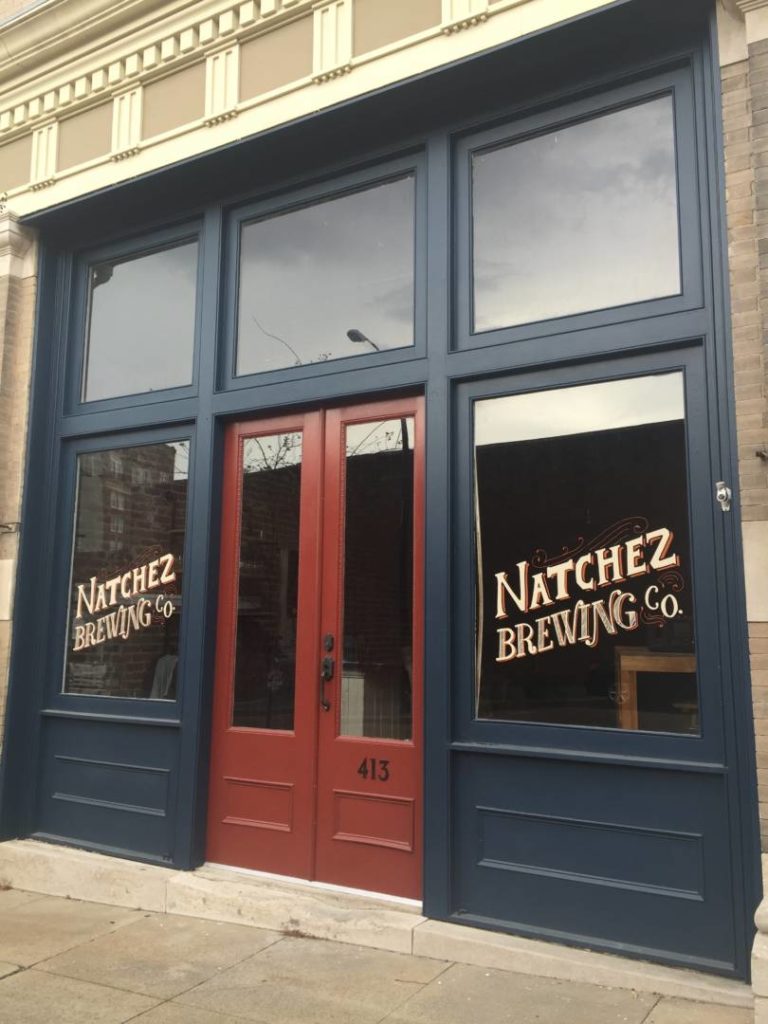
Itineraries in Mississippi, Natchez
If it wasn’t for the cars parked along the streets of the downtown, you could well think to be into a stop motion of “Gone with the wind”.
Try to think about the cobbled paving streets, the coaches (for tourists), the wrought iron streetlights, the antiques stores from which life-size dummies with nice period costumes pip out and about the ancient dwellings following one another, wonderful, one next to the other.
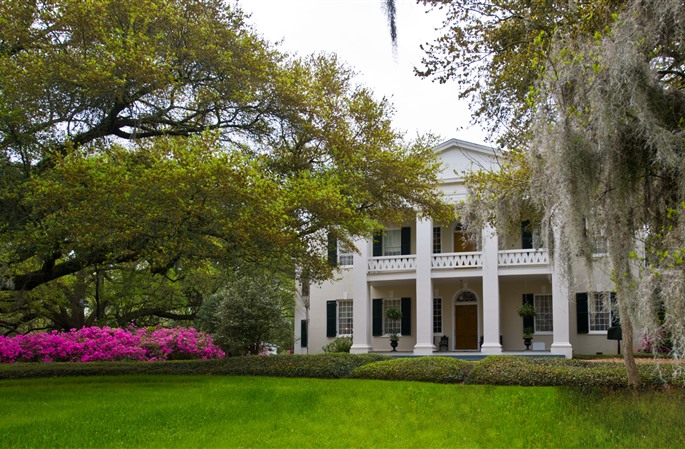
Itineraries in Mississippi: the wonderful dwellings of Natchez
The best moment to visit it is without any doubt the Spring, during the Spring Pilgrimage Season, when many private dwellings open to public.
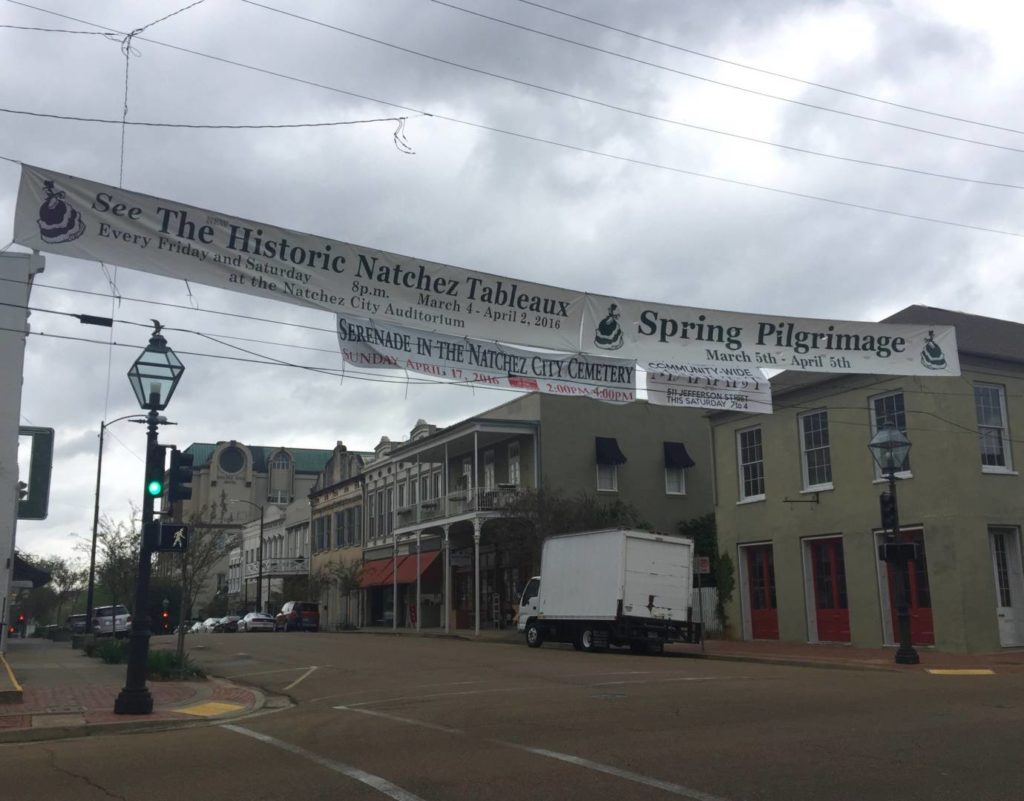
Natchez during the Spring Pilgrimage Season
Go to the Visitor Center to get map and indications to visit the greatest number – if you want you can also take part into daily tours that include several of them – and remember that in some of these it’s also possible to stay overnight. Click here to find the complete list of the historic B&B in the town.
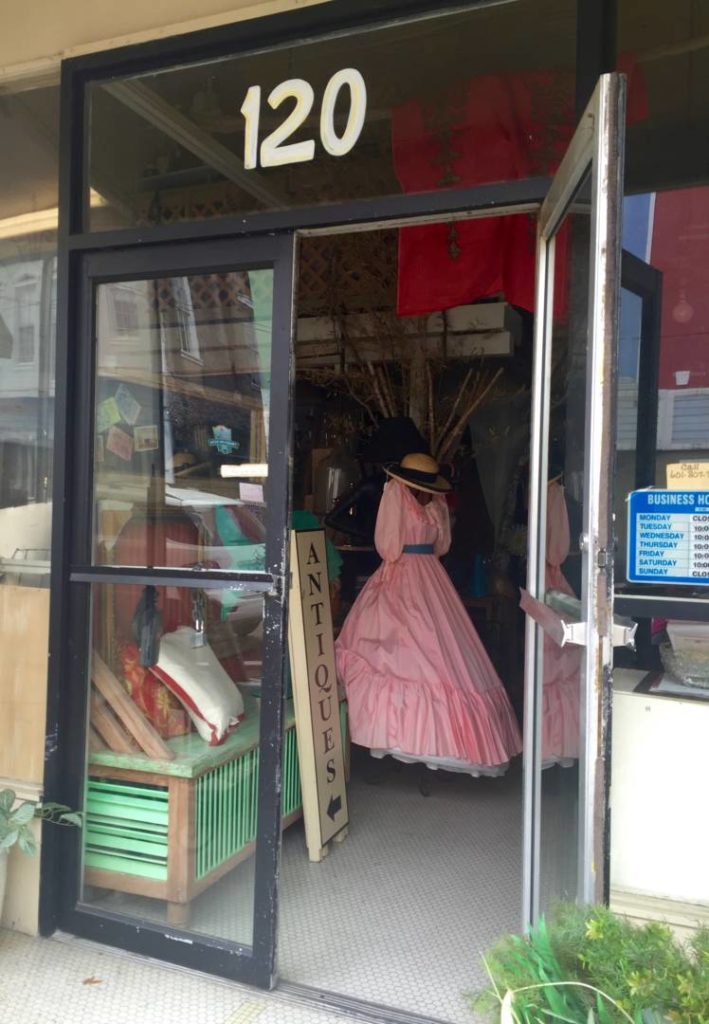
Itineraries in Mississippi: Natchez, antiques
At the end of the day enjoy a relaxing walk along the Mississippi River. To the south of Broadway St. you’ll find some nice inns where to have dinner – Magnolia Grill is certainly among the best ones – and the saloon that often hosted Mark Twain during his journeys along the old river, Under the Hill – Saloon.
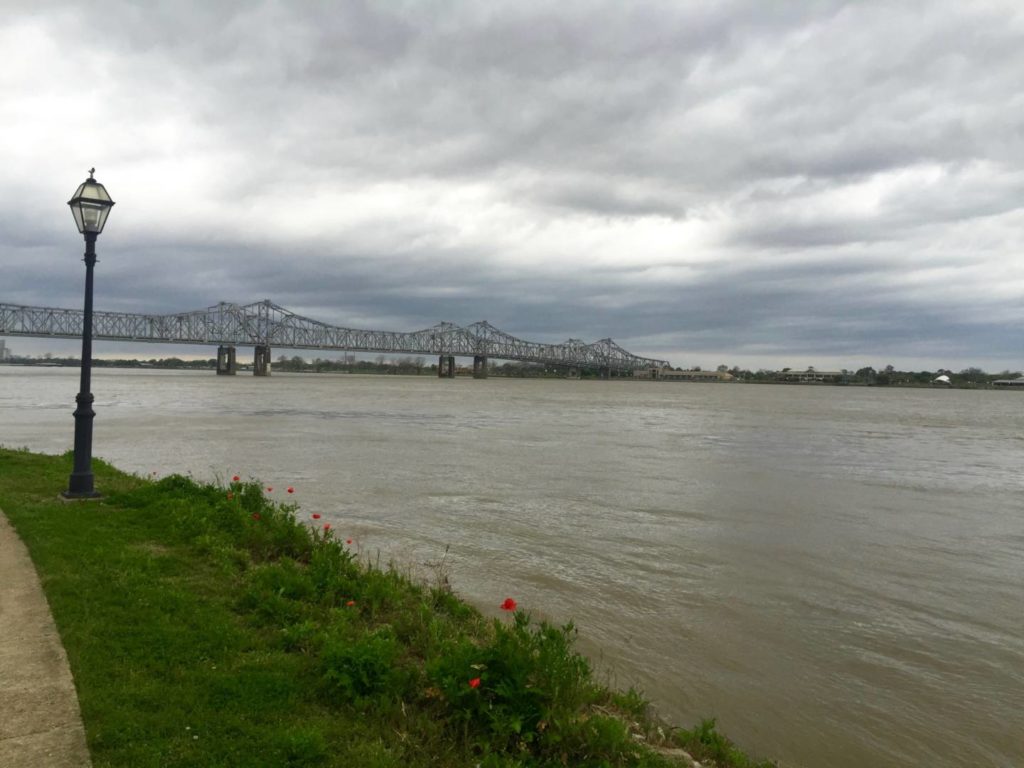
Itineraries in Mississippi: Natchez, sunset on the Mississippi River
The last leg not to miss of our itinerary is 4 km far from the Natchez downtown at 140, Lower Woodville Road: the Longwood Plantation.
The odd oriental dwelling wanted by Haller Nutt – a rich cotton entrepreneur of the area – for his family, is an octagonal building begun in 1860 and which remained unfinished due to the outbreak of the Civil War.
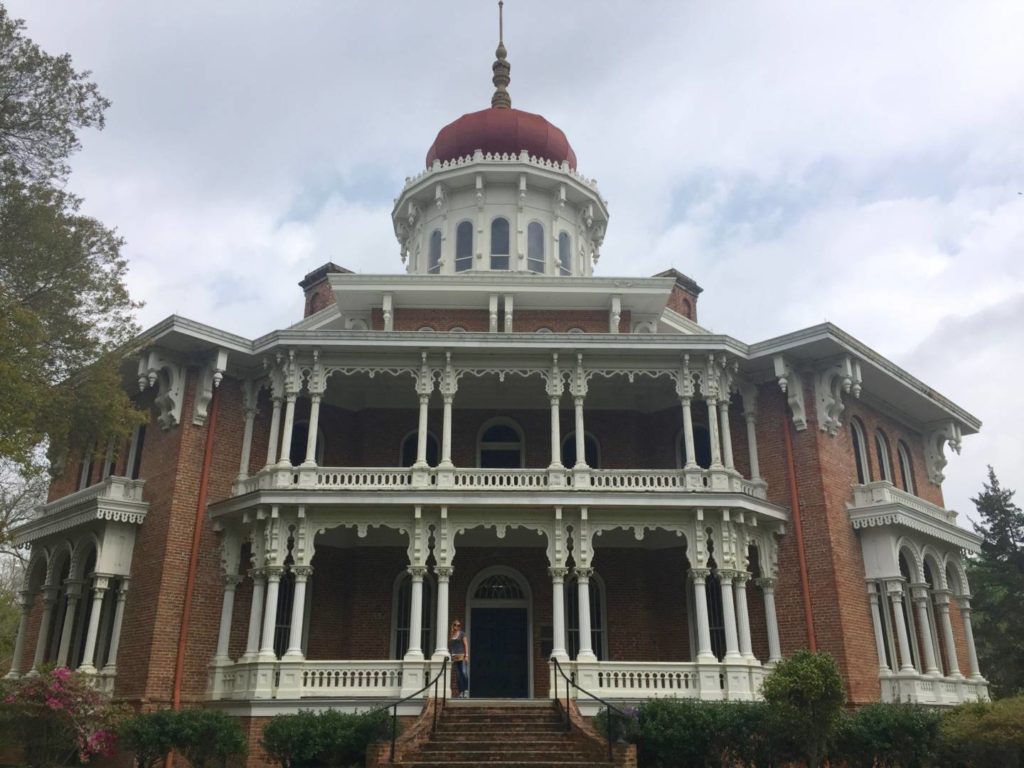
Itineraries in Mississippi: Longwood Plantation
The inside is divided into the luxury flat on the first floor – where it is strictly forbidden to take photos – and in the remaining boundless upper part which remained completely rough.
You can still see the tools of the workers and the wood cases (on some of them you can read the name of The Nutts) stopped there, as crystallized in time, when the Civil War out broke and the family had to face a long period of financial straits and difficulties due to the untimely death of Haller Nutt.
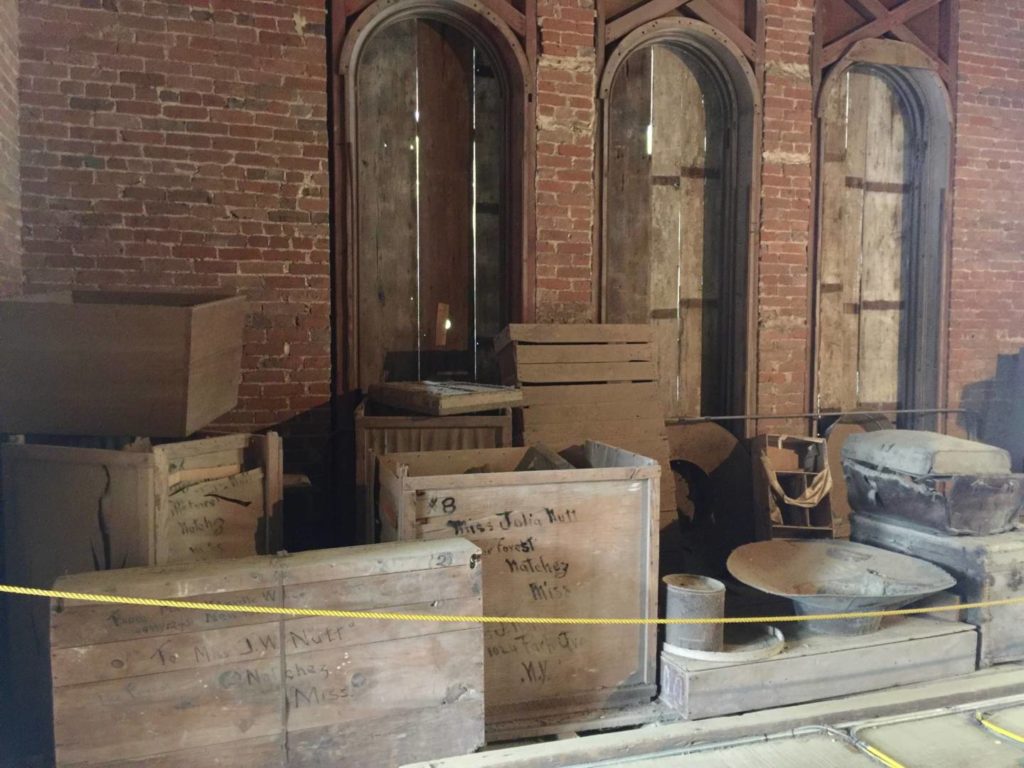
Itineraries in Mississippi: Longwood Plantation, the unfinished floor
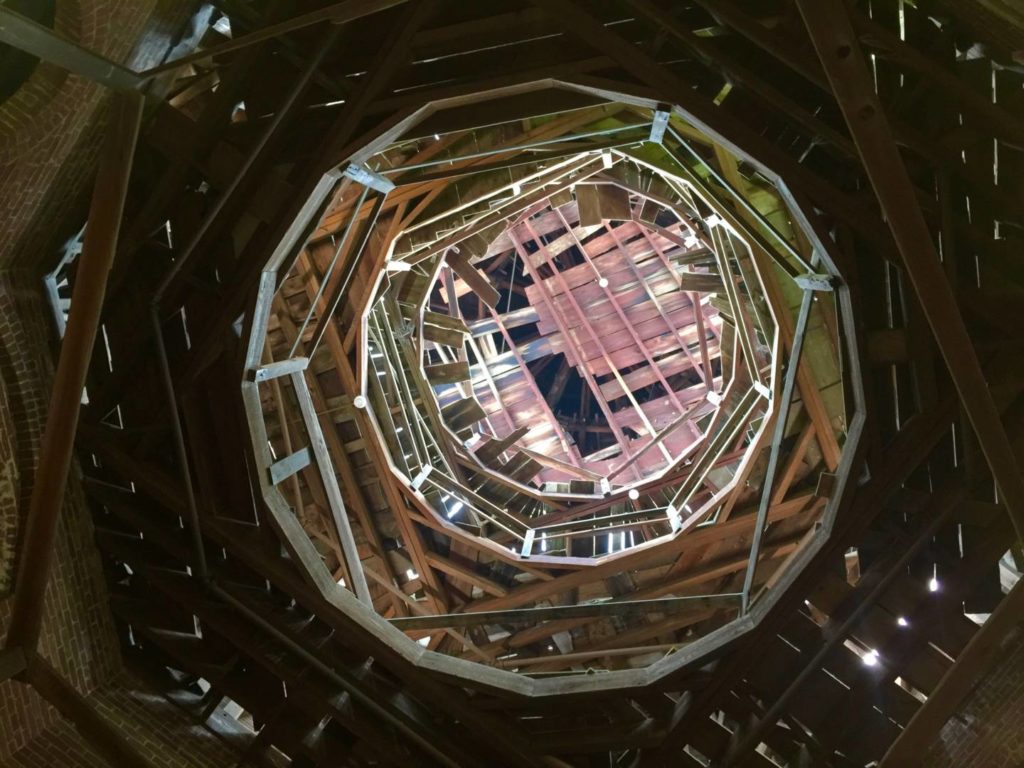
Itineraries in Mississippi: Longwood Plantation, the dome seen from the inside
Little far from the entrance, following a bucolic path swallowed by vegetation, you reach the little and suggestive family cemetery.
Longwood Plantation, too, was used as location for successful movies and TV series, first among equals “True Blood”.
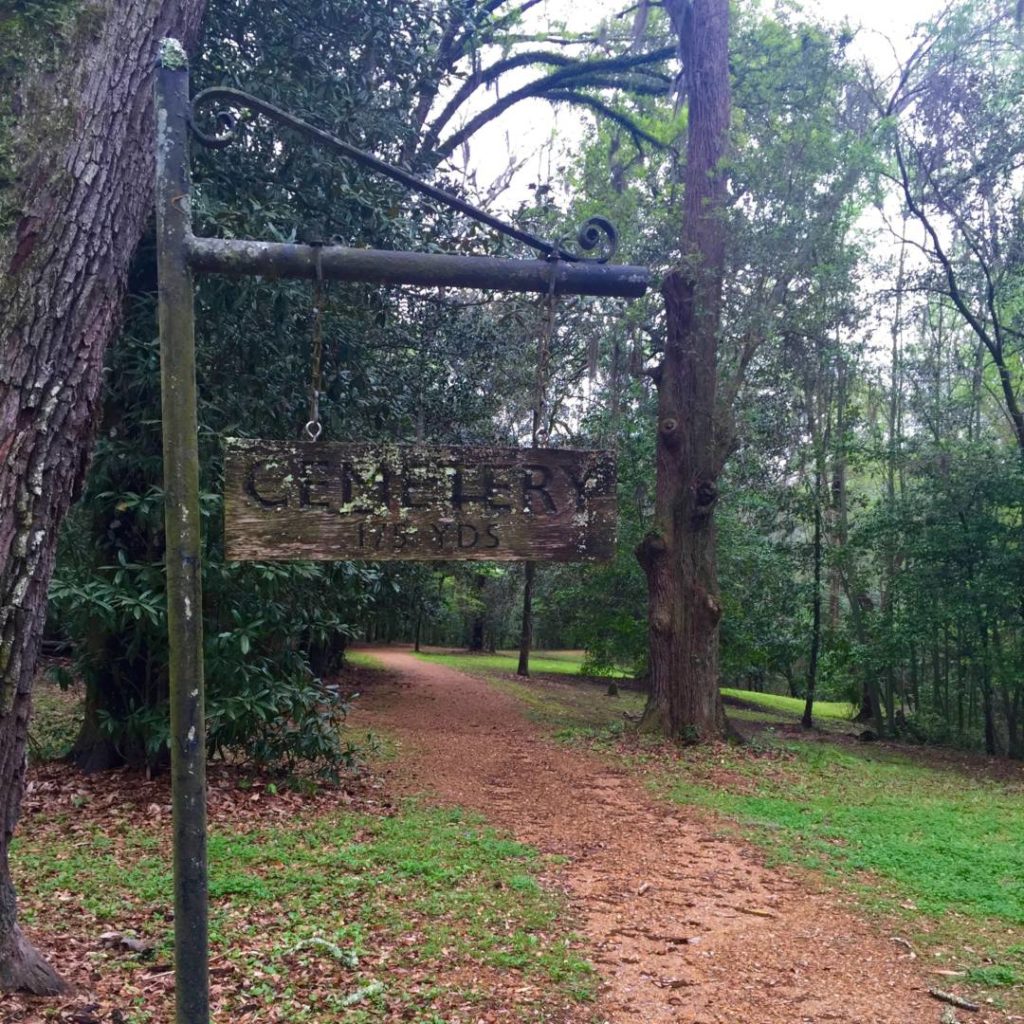
Itineraries in Mississippi: Longwood Plantation, the path for the family cemetery
What results probably to be one of my favourite itineraries in Mississippi ends here.
If you want, from Natchez you can reach easily – in about 150km – the capital of Mississippi, Jackson, or in little over you can reach Louisiana with its very beautiful Baton Rouge and New Orleans.